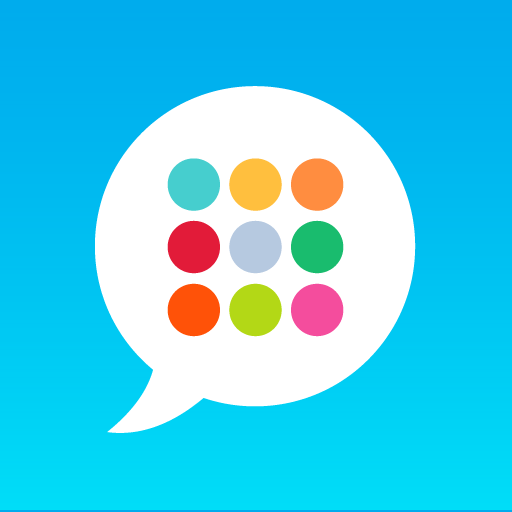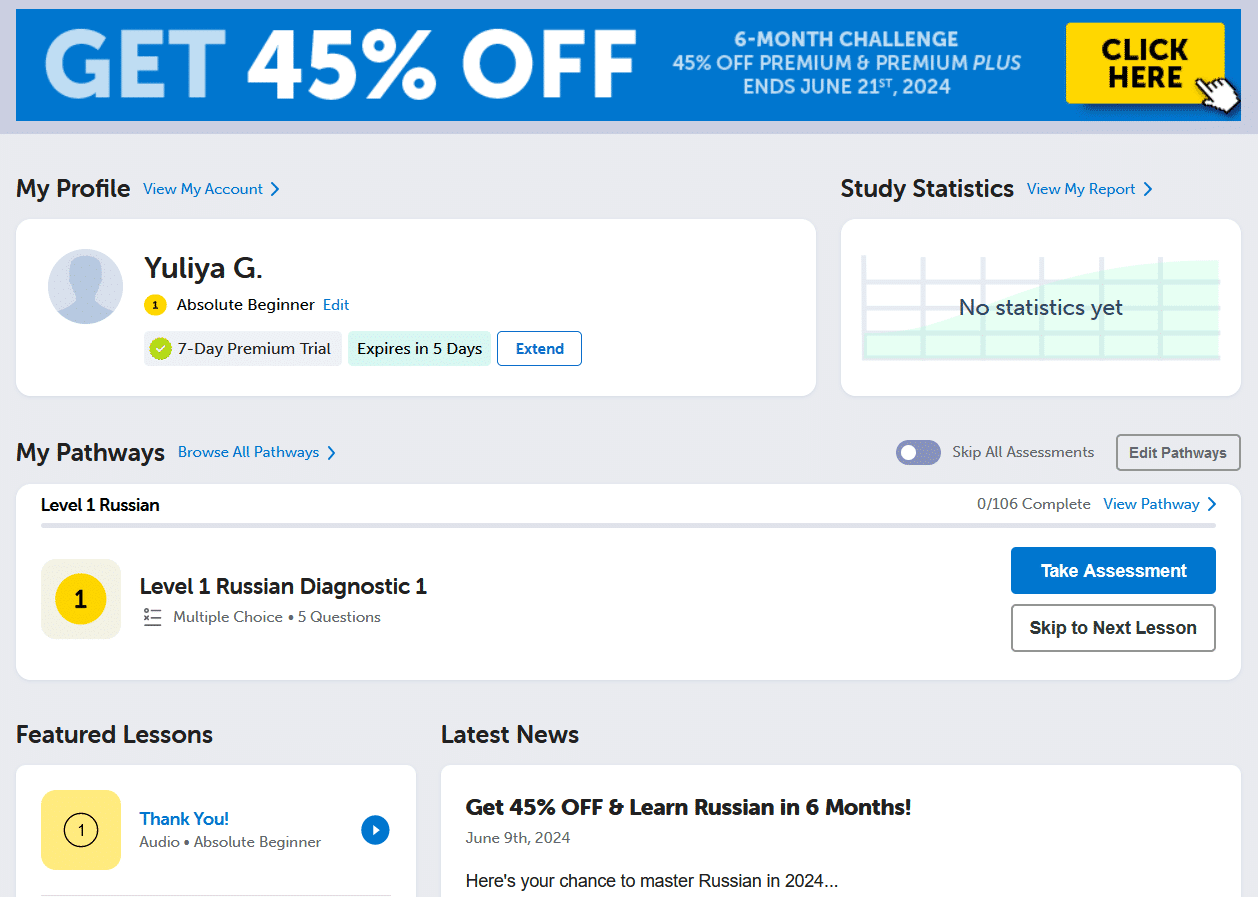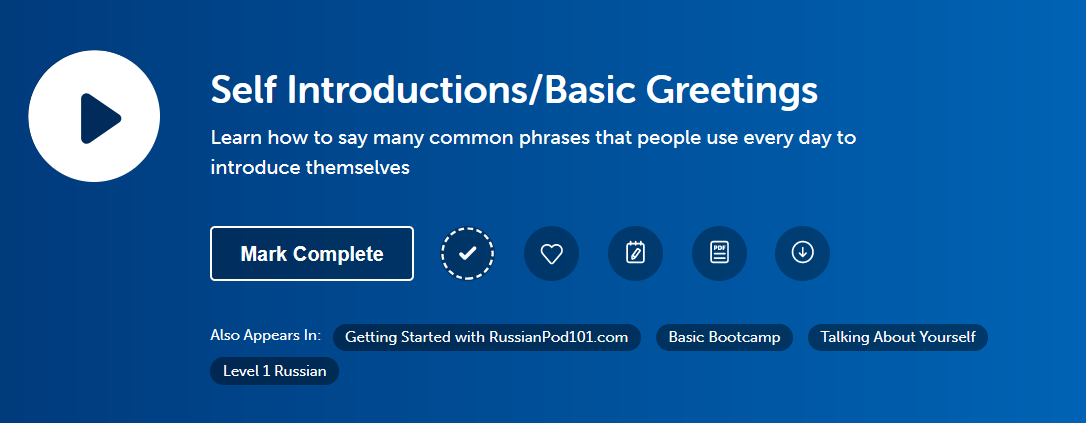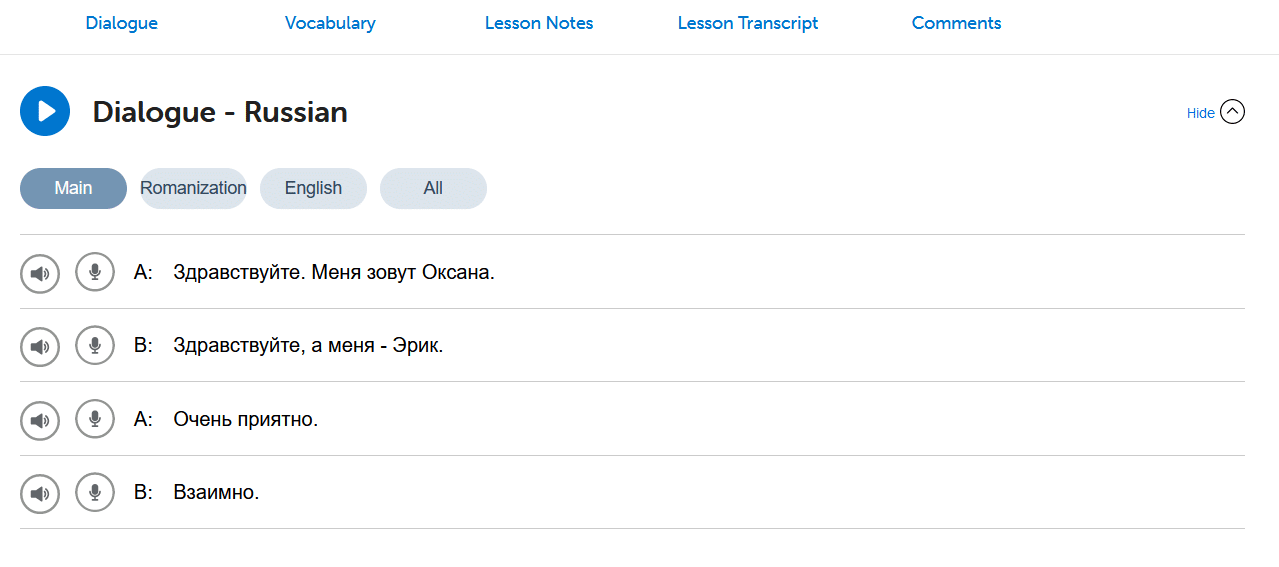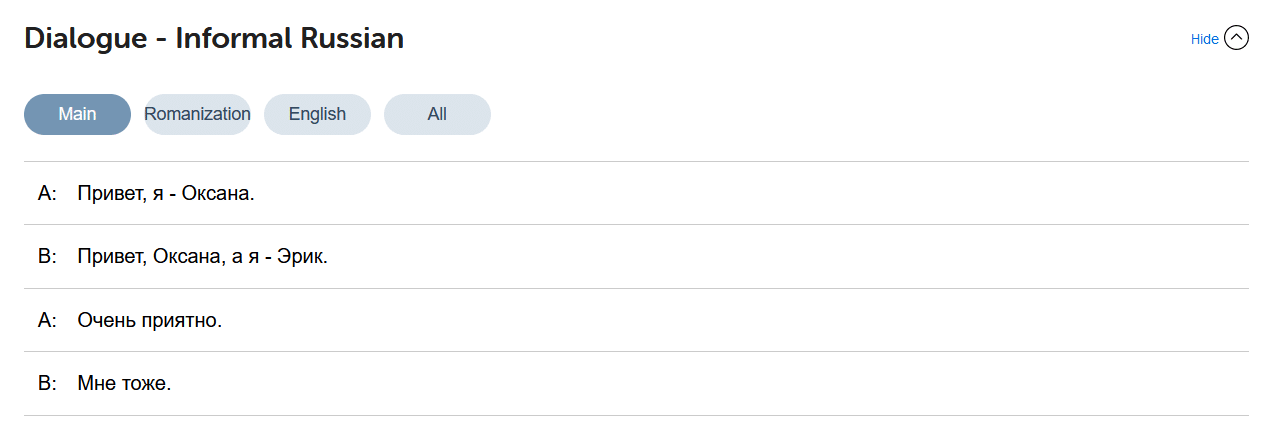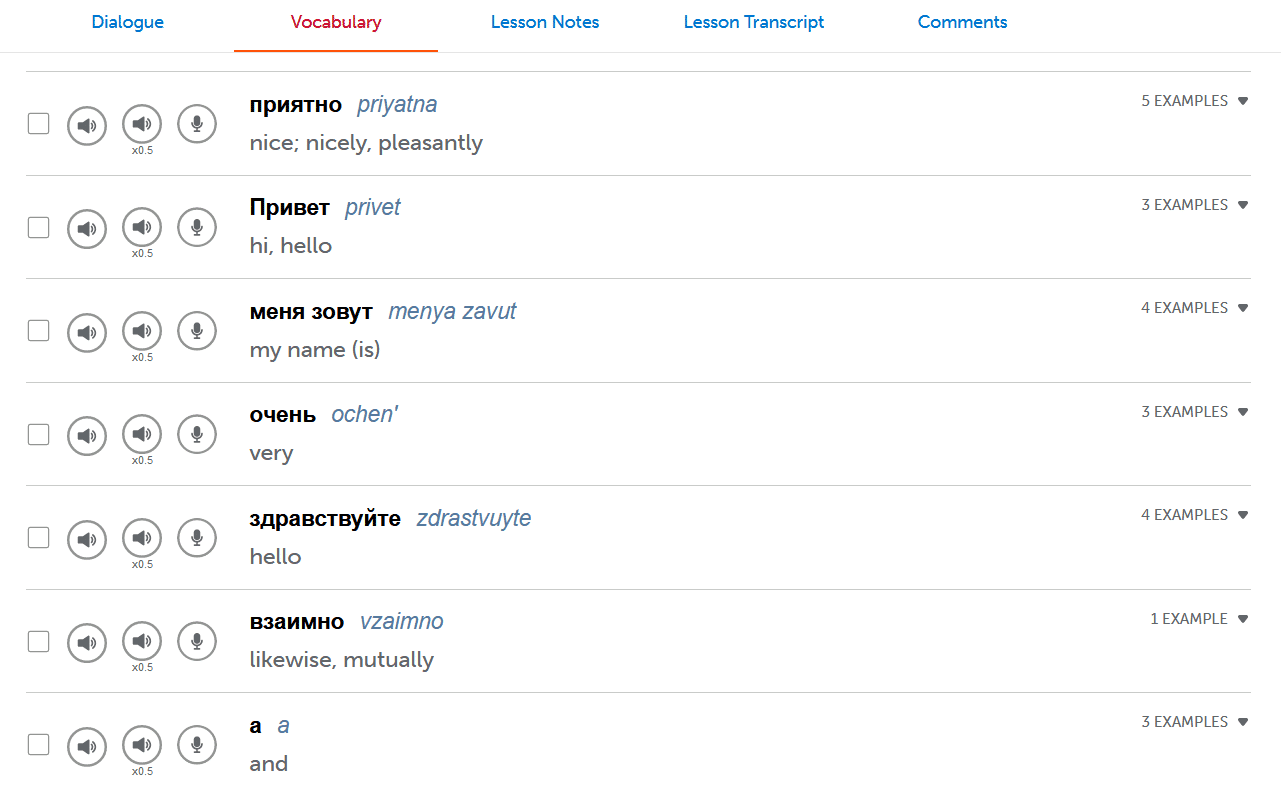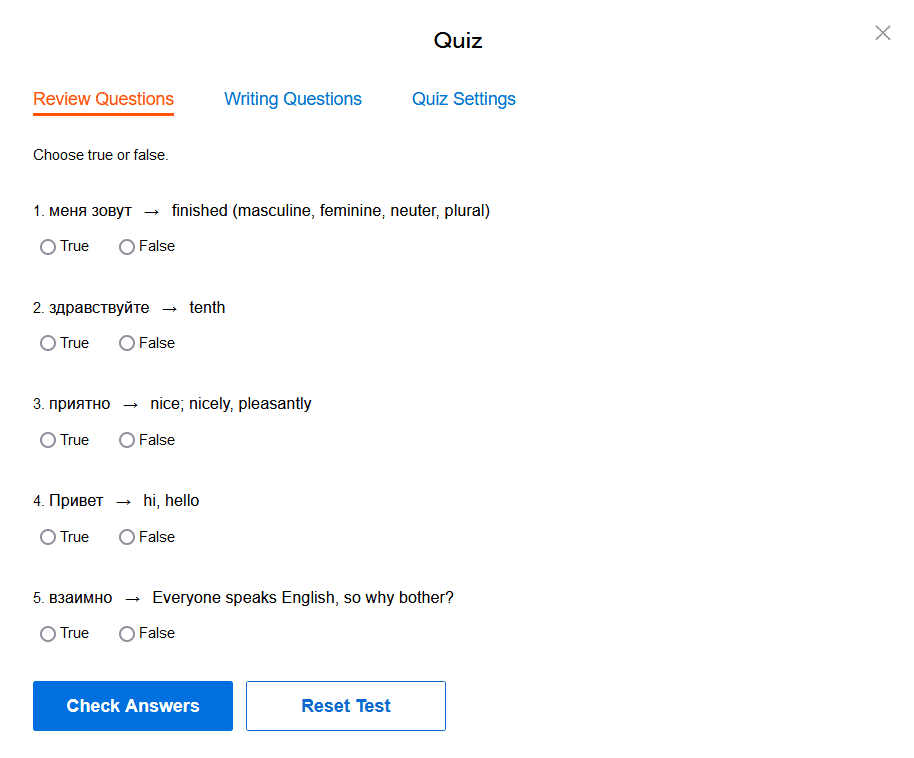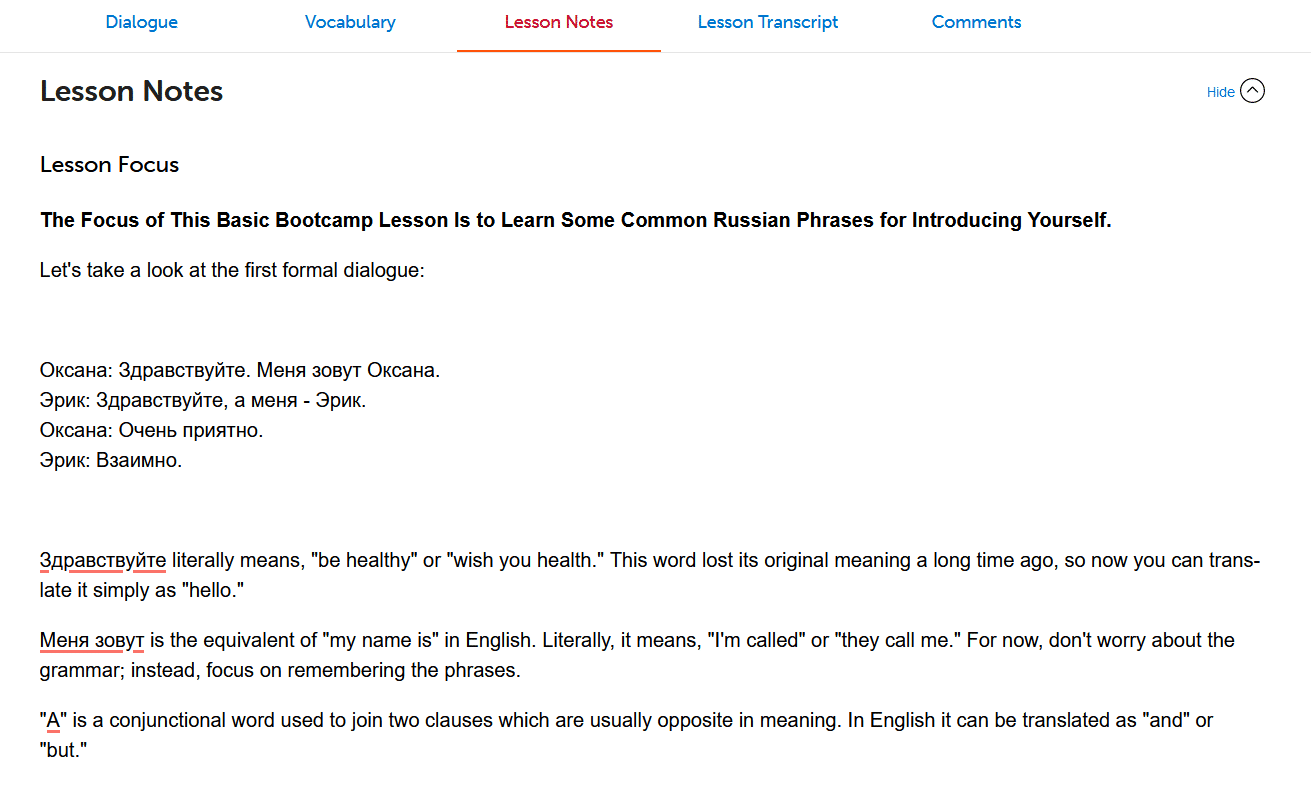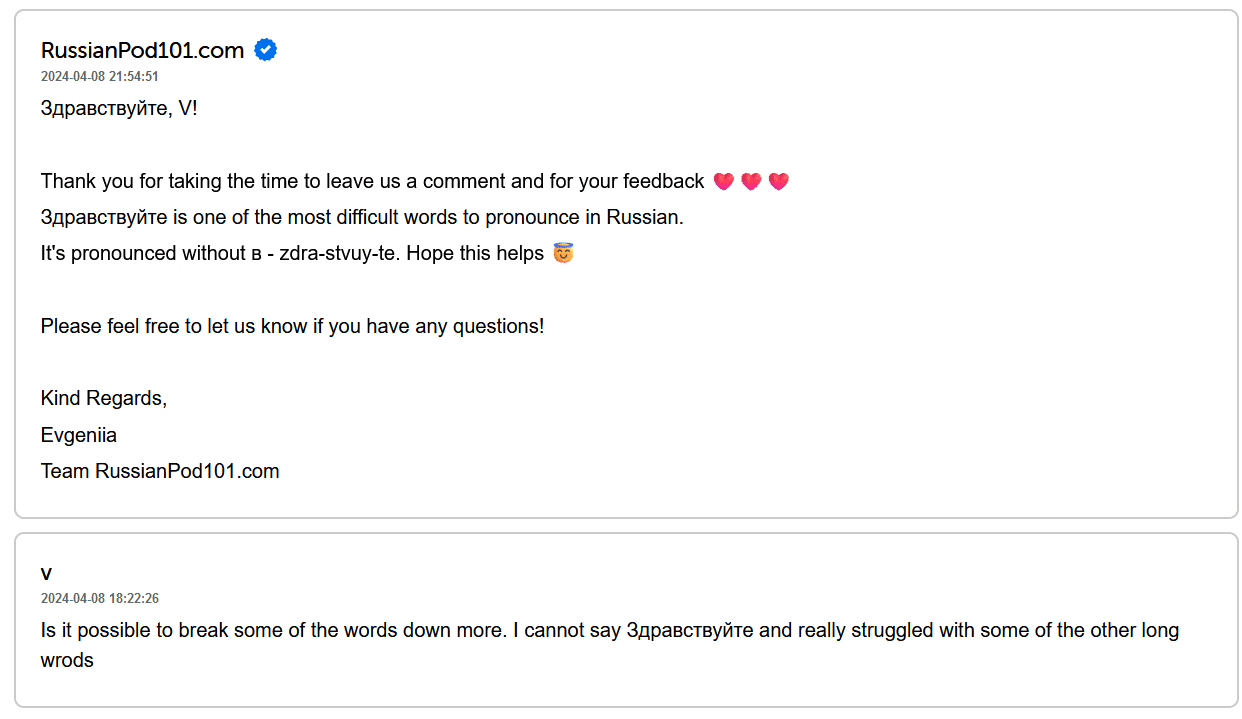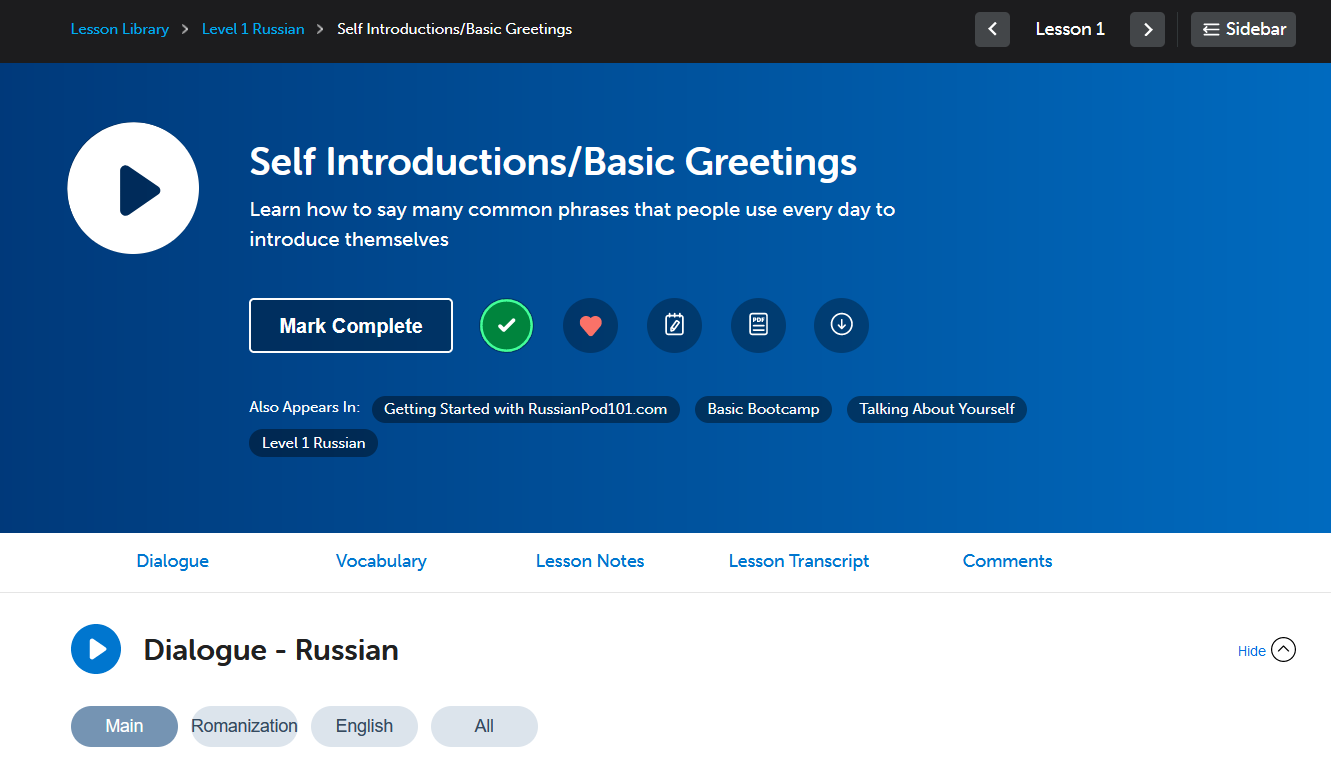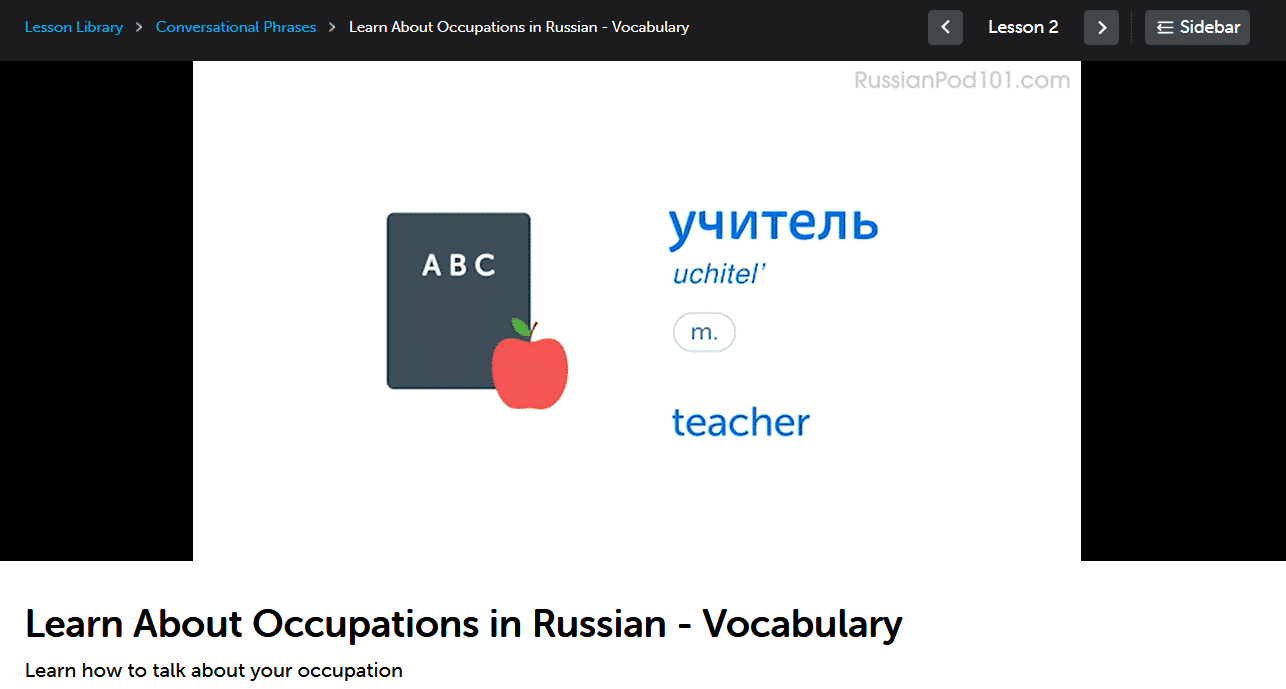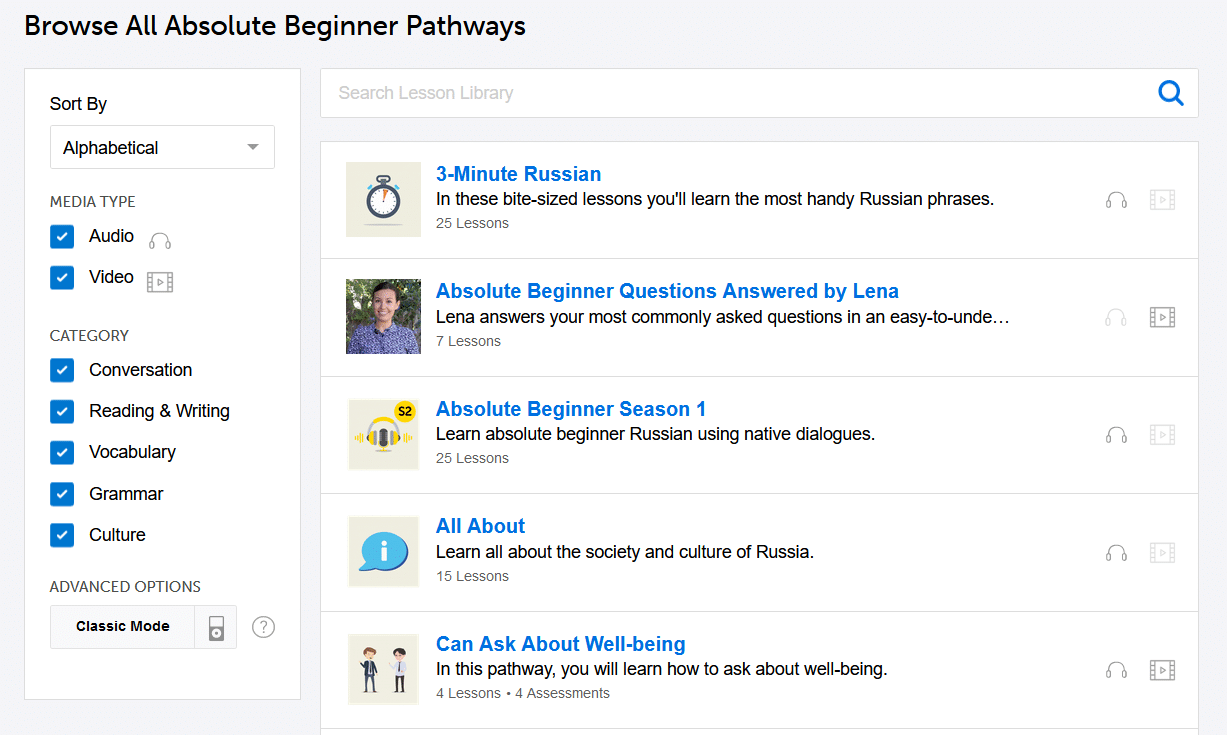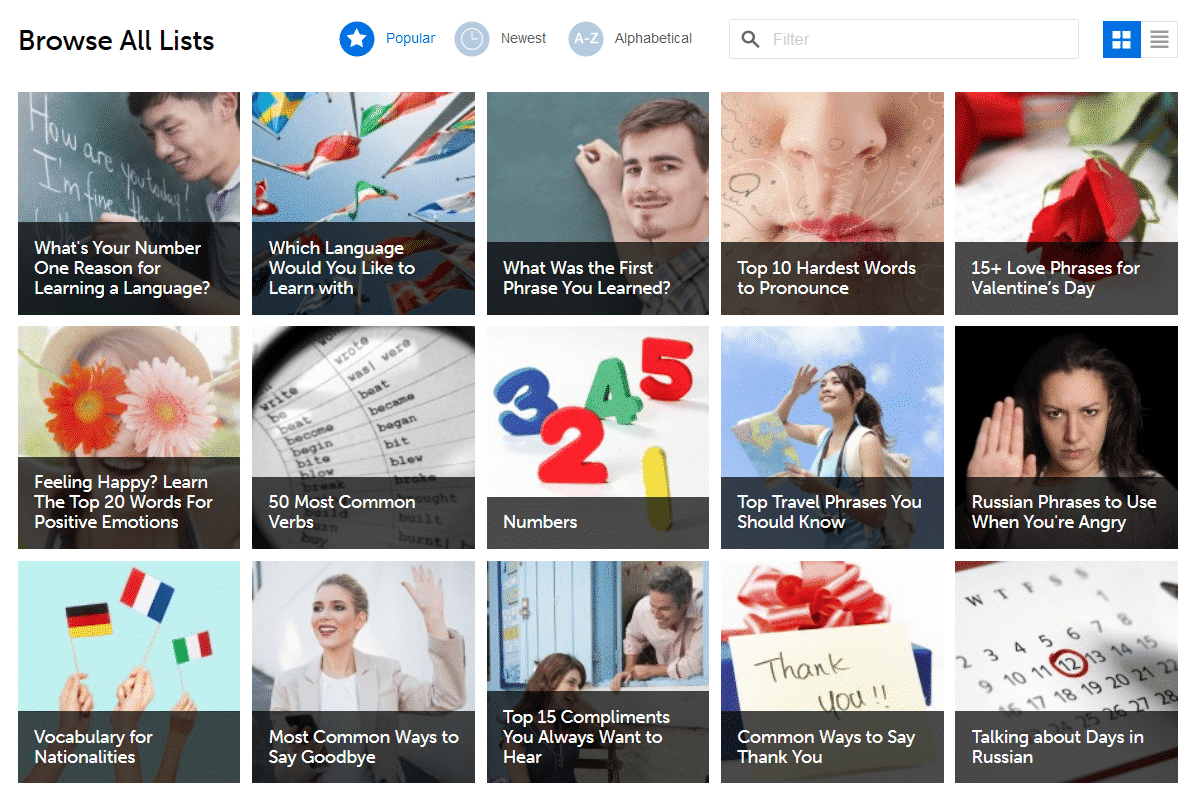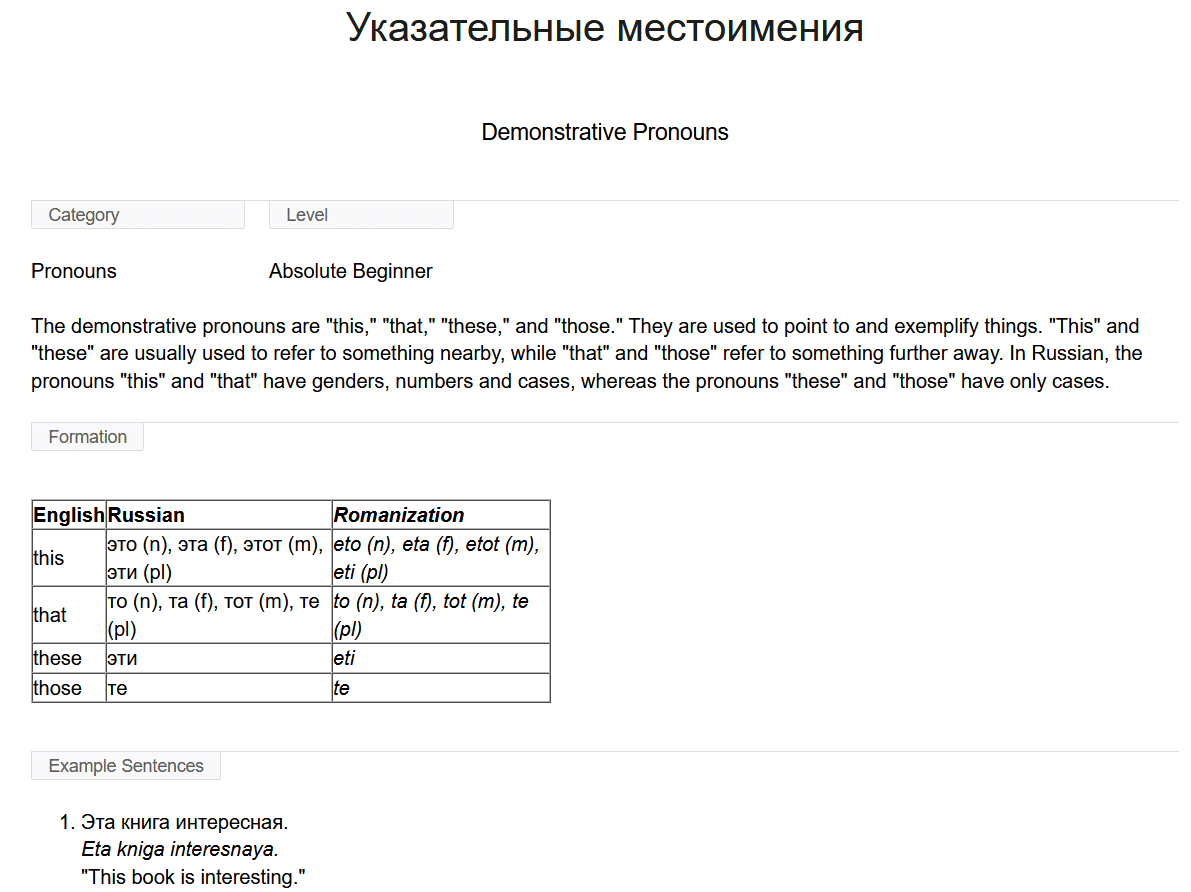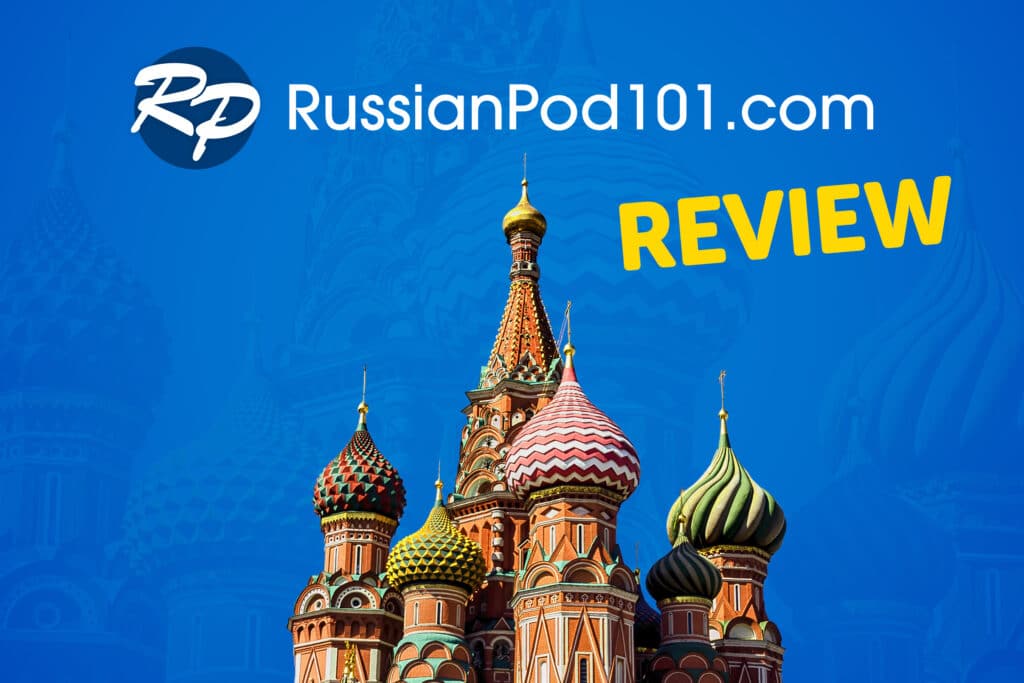
RussianPod101 Review: Great Audio Lessons for Beginners But Not a Comprehensive Resource
I’m a native Russian speaker, which means that I know what sounds right in the language, but not why. I tried RussianPod101 to see if it can help me learn the Russian language on a more fundamental level.
I found that the program offers some great content for beginners, but didn’t have as much value for intermediate and advanced learners.
Before we get on to the RussianPod101 review, please note that this post includes affiliate links that will earn us a commission if you click on them and make a purchase (at no additional cost to you). All products and services are thoroughly tested. In this post, I provide an honest review based on my experience with the program and not influenced by commissions.
To get the most authentic experience, I started right at the beginning—with basic greetings—and worked my way up the lessons to see how much the program has to offer.
Contents
- What Is RussianPod101?
- First Impressions: User-friendly But Aggressively Upsells
- A Breakdown a Typical Lesson
- RussianPod101 Features: Everything Else the Program Has to Offer
- Alternatives to RussianPod101
- Conclusion: Should You Try RussianPod101?
Download: This blog post is available as a convenient and portable PDF that you can take anywhere. Click here to get a copy. (Download)
What Is RussianPod101?
RussianPod101 is an online platform designed to teach the Russian language to beginning through advanced learners. It’s a member of the “Pod101” family of programs by Innovative Language. It offers a unique learning experience that involves in-depth video lessons, a flashcard system, a word bank and dictionary directory, downloadable lesson plans and homework and more.
RussianPod101’s mission is to expose learners to native speakers through authentic video and audio of Russian speakers with different voices and speaking styles.
You can make an account with RussianPod101 for free and get some lessons and downloadable materials without a subscription. However, to access more of the program, you’ll need to pick either a Basic, Premium or Premium Plus membership.
- Basic Membership: $8/mo . Includes complete audio archive access, mobile access, lesson notes and one-click lesson downloads.
- Premium Membership: $25/mo. Includes Basic Membership, audio transcripts, bonus lessons, interactive quizzes, personal word bank, 2000+ words and audio clips and spaced repetition flashcards.
- Premium PLUS Membership: $47/mo. Includes Premium Membership, professional assessment, personalized learning program, writing and pronunciation practice and one-on-one instruction.
There are frequent sales, and you get a discount for signing up for longer time periods. You also seem to start with a 7-day free trial of Premium (although I didn’t add any payment information).
RussianPod101 is available for Android and iOS devices and can also be found on Amazon.
First Impressions: User-friendly But Aggressively Upsells
The onboarding and signup process are fairly quick and simple, though they certainly throw their premium memberships in your face frequently. Within the first few minutes of creating an account, I got two notices for a “special, limited time offer,” a “sale” banner across the top of the page and an announcement sale right in the middle of the dashboard. The sale banner remained at the top of every page that I accessed while I was trying out the resource.
In spite of the aggressive attempts to upsell, I did find the program to be simple, user-friendly, well-organized. I was shown the first lesson (a diagnostic) immediately, and allowed to either start with that lesson or skip to the next one.
The dashboard also presents me with some featured lessons and vocabulary lists, the option to explore other “pathways” (series of lessons) and the ability to update which lessons within each pathway I want to take.
There’s a lot more to explore, so I decided to skip the diagnostic and dive straight into the first lesson.
A Breakdown a Typical Lesson
Lesson Audio: Packed with Excellent Information
The first lesson looks at how to say hello and introduce yourself. It’s an audio lesson, and it hooked me immediately, from the catchy intro music to the cheesy and delightfully campy “bootcamp” imagery.
It’s clear that RussianPod101 lives up to the “Pod” part of its name, as this audio lesson is excellent. Our two hosts are Oksana, a native Russian speaker, and Erik, an English speaker learning Russian. The two introduce the topic (in English) and share a sample dialogue in Russian.
They then go through the meanings of the Russian words they use, and share a lot of useful cultural information that you don’t get from just reading the dialogue. For instance, you learn proper handshake etiquette, the role of formality in choosing how to greet someone and some useful tidbits to get you started thinking about the grammar of the language.
The hosts aren’t the most enthusiastic—both are clearly just reading the script—but I still found the lesson to be engaging and extremely useful.
Oddly, the transcript for the lesson isn’t directly underneath. Instead, it’s all the way at the end of the lesson. I recommend scrolling down and reading along as you listen.
Dialogue: Great Design But Missing Audio
The written part of the lesson starts out with the formal and informal versions of the dialogue from the lesson. Formality is extremely important to Russian speakers, so I think it’s great that both versions are on display front and center.
Both dialogues are shown in Russian Cyrillic by default, but you can toggle the view to display the Romanization, English or all the forms of writing.
The formal version of the dialogue has audio featuring our hosts Erik and Oksana, speaking slowly but naturally. The informal version, for some reason, doesn’t have associated audio—despite being completely different.
Vocabulary List: Useful, Beginner-friendly Quizzes
Following the dialogue is a vocabulary list of every word used in the dialogue, written in both Cyrillic and Romanized, as well as a definition and several examples. This list includes the option to hear the word at normal or slower speed as well as the chance to record yourself saying the word.
You can save words to your word bank or flashcard decks and view all the words as a slideshow.
But my favorite feature is the quiz. I clicked on it several times just to see what came up, and the questions each time were randomized, offering a new learning opportunity every time you take the quiz. You can choose between multiple-choice and fill-in-the-blank questions, and even choose how the questions are written.
I happen to be able to read Russian, but beginners who haven’t learned the writing system yet will appreciate this very inclusive feature.
Lesson Notes: Information Overload
The “Lesson Notes” section breaks down every word in the dialogue, one at a time. This means that every word and phrase is given the same attention. I thought it would be the meat of the lesson, but it turns out to be more of a supplemental resource for anyone who wants to learn more about the words and phrases used in the dialogue.
For instance, you learn what the word Здравствуйте (zdrastvuyte) used to mean before it became a simple “hello.” You also get a breakdown and several examples of how to use the words очень (ochen’) and a (a), which mean “very” and “and,” respectively.
Beginners might find the amount of information in this section to be overwhelming, as it goes into even more detail than the audio lesson.
Comments Section: Responsive Moderators
Learners are encouraged to leave questions and comments in the comments section. To my surprise, the Pod101 team is over in the comments responding to everything, even the comments that just say “thanks, nice lesson.”
The responses aren’t always very helpful, often giving just surface level answers or not fully answering the question. Still, it’s nice to see that they appear attentive, and makes me feel like my questions aren’t simply being swallowed up by a void.
However, I don’t see any learners interacting with each other in the comments. If you’re looking for a community of learners, this is not the place to find it.
Other Lesson Features: Notes and Favorites
Before you get to the first section, there are a few additional options. I kind of skipped over them in favor of the more eye-catching dialogue section, but they offer useful ways to interact with the lessons.
They include options to do the following:
- Mark the lesson as complete.
- Add it to your favorite lessons so you can revisit it at a later time.
- Create a (private) note for yourself. You can see your notes every time you come back to a lesson, but you can also find all your notes in one place in the “My Notes” section.
- Download a pdf of the lesson, or the audio and video files for access offline.
You can also hide each section, if you wan to eliminate distractions and focus on a specific part of the lesson.
RussianPod101 Features: Everything Else the Program Has to Offer
Video Lessons: Lacking in Number and Content
RussianPod101 does have video lessons, but they’re not as robust in number and quality as their audio lessons. Many of the video lessons I tried weren’t actually that useful. For instance, there’s one that’s supposed to be “reading comprehension practice” but it’s oddly focused on trains and hotels, and one video was just spent reading one single two-word notice.
The video lessons also tend to be very short, under a minute each. A couple of the teacher-led ones have more meat to them, but they’re also pretty short and not comprehensive
Although the illustrations are cute, I’d recommend checking out the program’s YouTube channel, instead. There are a lot more video lessons there, and they’re available for free and without an account. You can also use a more video-centric program like FluentU (we’ll talk more about this later in this post).
Pathways: Guided Learning Courses
RussianPod101’s learning is based around courses called “Pathways.” They’re made up of lessons and take you through your chosen topic step by step. Some pathways are made up of a lot of lessons, while others are just two or three. Pathway topics include how to introduce yourself, listening and reading comprehension, everyday conversations and vocabulary. There’s also a dedicated pathway for each level.
I found the cultural topics to be the most interesting, teaching the language while talking about everyday life in Russia, Russian art / artists, and more.
You can choose any Pathway to study, which is a great way to focus your learning. Browse Pathways by audio or video lessons, as well as categories like conversation, vocabulary, culture and more.
Pathways are also organized by level, from absolute beginner to advanced. I liked that I wasn’t limited to my level, and could choose to study any lesson and any Pathway from any level.
I did notice, though, that the higher you go in level, the fewer pathways are available. For instance, the absolute beginner level has 37 pathways, but the upper intermediate level only has seven.
Vocabulary: Many Word Lists on Many Topics
RussianPod101 has a great selection of vocabulary resources, including vocabulary lists, a word bank (of your saved words), word of the day, dictionary, frequency lists and a phrasebook. While some things are locked behind the subscription, there are a lot of free resources here, as well.
There’s a huge collection of vocab lists on nearly every topic you can imagine, from common greetings and goodbyes to soccer and shark vocabulary. There are some questionable topics, too, like “top 10 foods that will kill you faster,” which seem almost too random to me.
The lists are useful, as you can hear the audio of every item on the list, and add them to your word bank and flashcards (but not remove them), and record yourself speaking the word or phrase. I love that you can add any word to your flashcards, but I wish I could also search for specific words to save.
My Teacher: Mysteriously Lacking in Detail
The main selling point of the Premium PLUS program is access to the “My Teacher” feature. This boasts a personal 1-on-1 teacher, ongoing assessments and a personalized lesson plan.
However, for such an expensive upgrade, details on what this entails are scarce. There isn’t much information about the plan, and even less information about it from actual users.
In fact, according to some reports, the advertised “live” tutor can take several days to respond and is a text chat-only feature, which seems a bit deceptive. If you’re looking for a good tutor, I suggest that you look somewhere else.
Grammar Bank: Hidden Gem of a Resource
I thought at first that there’s not much grammar learning on RussianPod101. But it turns out, the grammar is there—it’s just a bit hidden. Housed within the “More” section is the Grammar Bank, a depository of grammar lessons and information.
There are 56 items in the Grammar Bank, and you can search and filter through them to find what you want to learn. Each grammar point has a concise explanation of the grammar element, along with example sentences, special usage notes, and related lessons. The resource is extremely useful, and I wonder why it’s so hidden on the program.
Beyond the Website: YouTube, Blog and the App
The Pod101 team does YouTube right, and the Russian program is no exception. The YouTube channel offers over 1,000 videos on every topic you could possibly want to learn, like vocabulary, pronunciation, grammar topics and even Russian writing and reading.
There is also a blog, which covers tons of content and learning points, as well as an app that takes the learning on the go.
Missing Features: What You Won’t Find on RussianPod101
RussianPod101 has so many resources for learners, but some elements are conspicuously missing.
My main complaint is the lack of speaking or writing practice. The vocabulary gives you a chance to record yourself, but there’s no feedback and no options to use words naturally or organically.
There doesn’t seem to be any writing practice at all, which is so key when you’re learning a language that uses a whole new writing system.
I mentioned this earlier, but RussianPod101 simply doesn’t have a lot of content for intermediate and higher learners. It’s excellent for beginners, but there are far fewer pathways and lessons for more advanced learners.
On top of this, the audio and video lessons tend to use English heavily, so you’re not exposed to too much authentic Russian.
Alternatives to RussianPod101
FluentU for Authentic Learning
RussianPod101 is great at teaching vocabulary, culture and the building blocks of the language. However, it falls short when it comes to actually using the language.
The FluentU program can fill in these gaps in your learning, or provide an entire alternative learning experience.
Plus, the videos are all naturally entertaining since they come from the shows, movies and channels that native Russian-speakers enjoy on the regular. You can watch documentary footage, television show clips, funny commericals and more all while learning the Russian language!
Take a quick look at what FluentU has on offer for yourself:
Didn't catch something? Go back and listen again. Missed a word? FluentU makes native Russian videos approachable through interactive captions. Tap or click on any word to see a definition, in-context usage examples, audio pronunciation, helpful images and more.
Access a complete interactive transcript of every video under the Dialogue tab. Easily review words and phrases with audio under Vocab.
Don’t stop there, though! Use FluentU’s quizzes to actively practice all the vocabulary in any video. Swipe left or right to see more examples of the word you're on.
And FluentU always keeps track of vocabulary that you’re learning. It uses that information to give you a 100% personalized experience by recommending videos and examples.
Start using the FluentU website on your computer or tablet or, better yet, download the FluentU app from the iTunes or Google Play store. Click here to take advantage of our current sale! (Expires at the end of this month.)
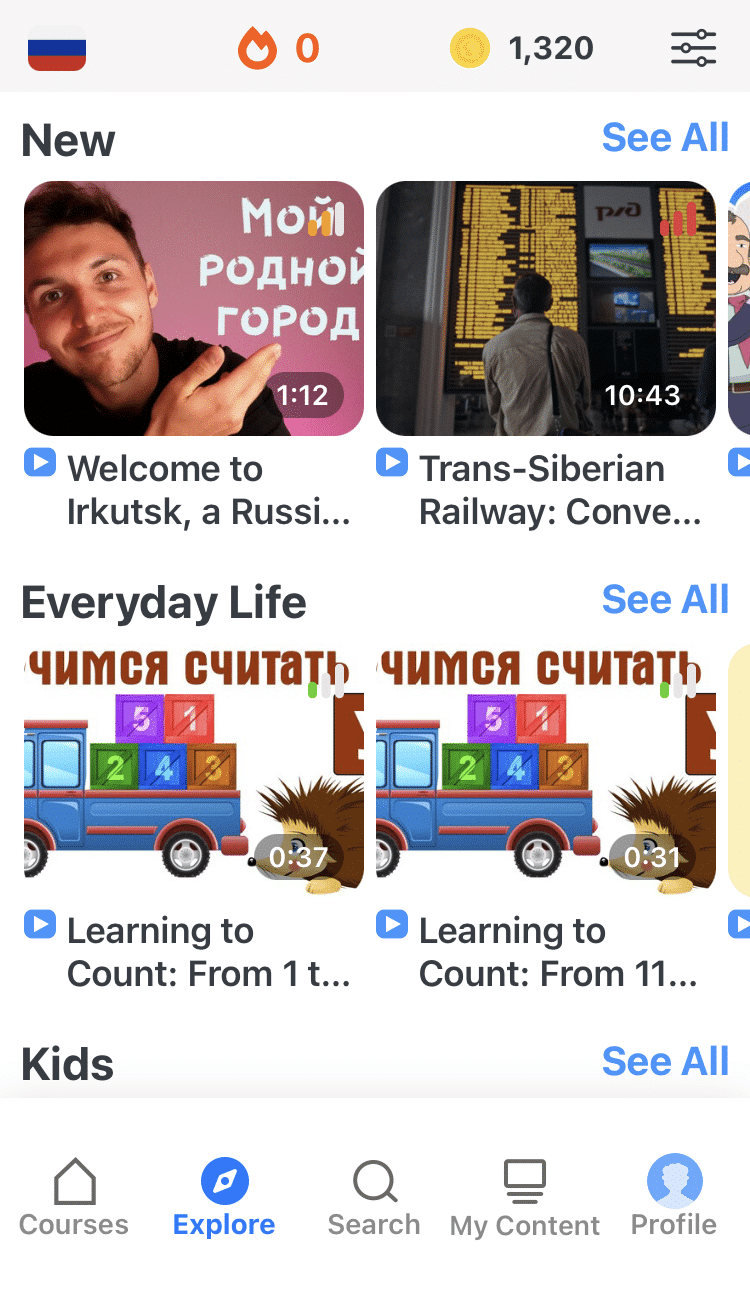
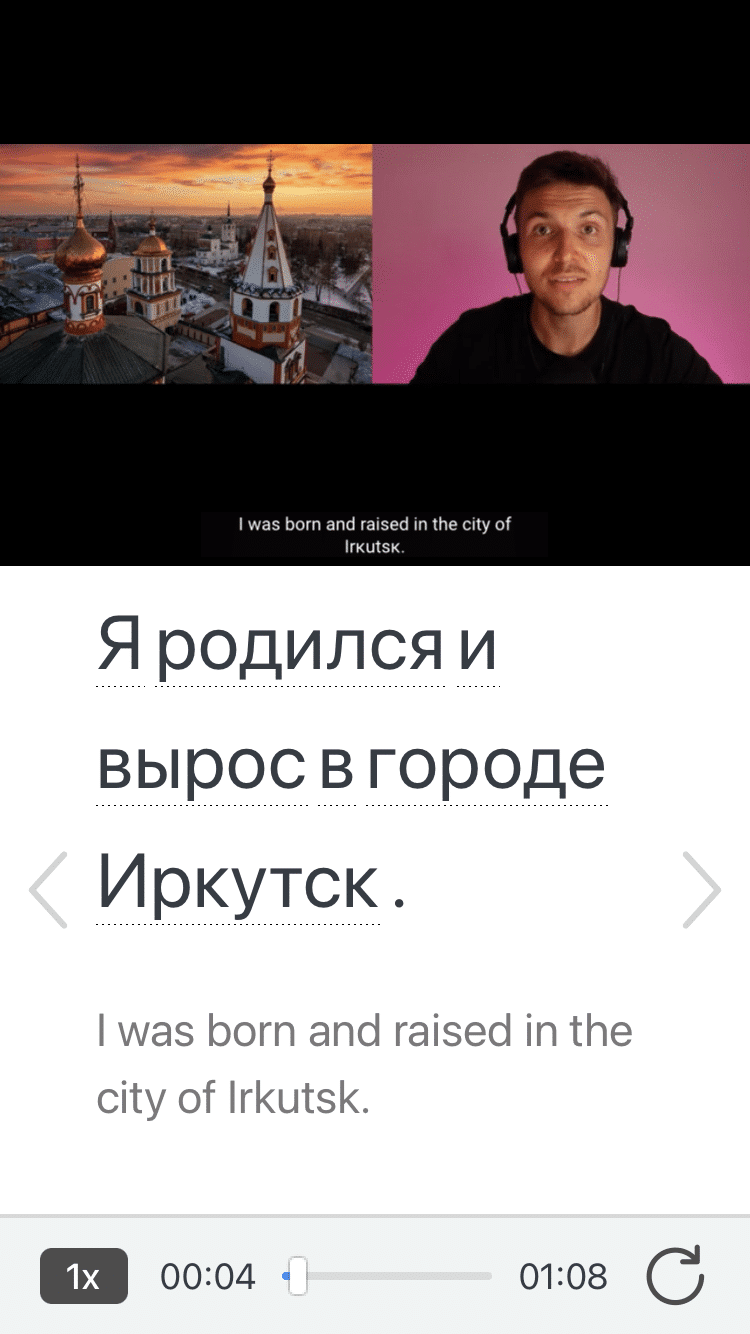
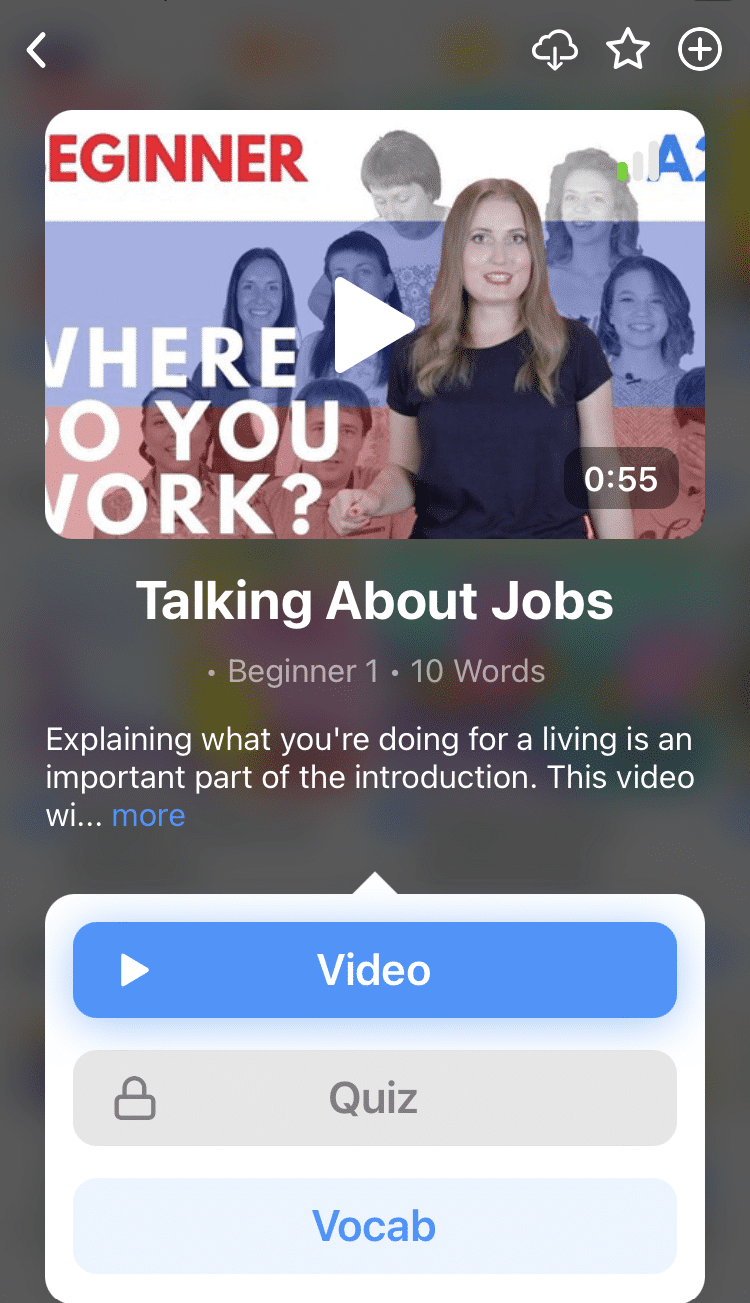
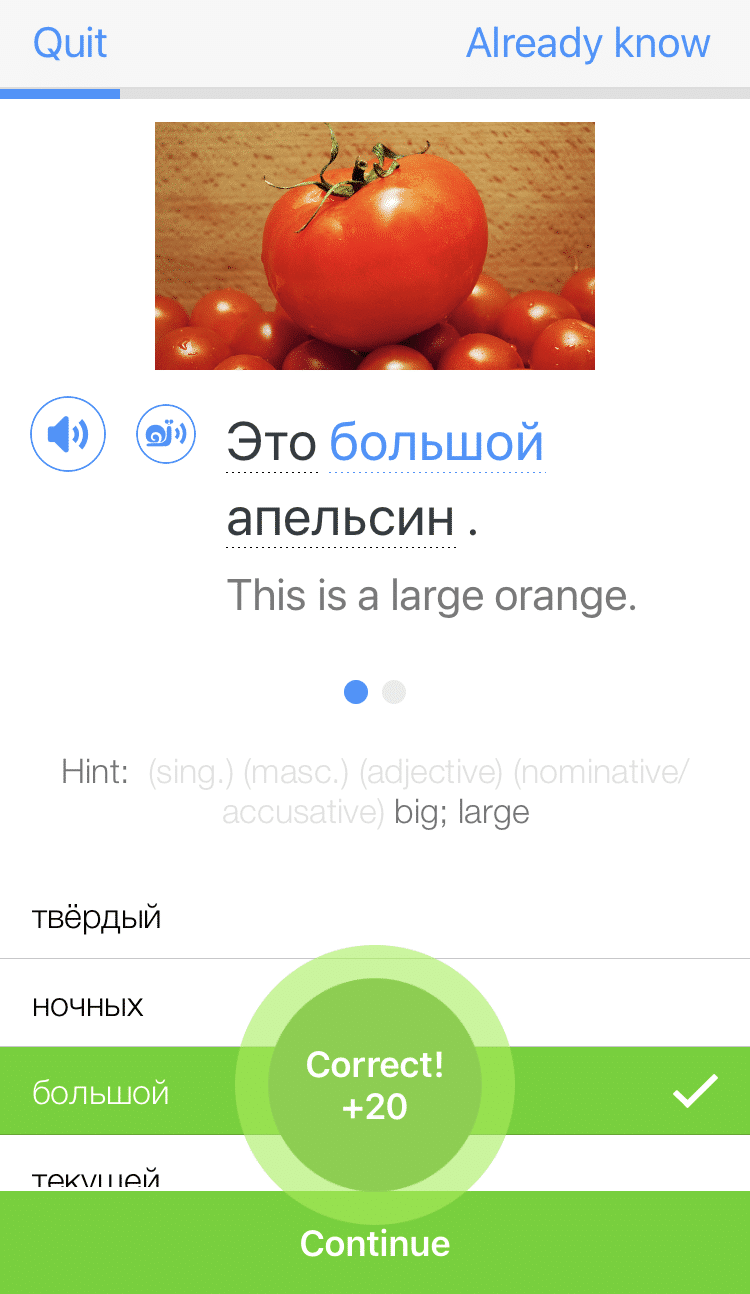
italki for Real One-on-one Teachers
I was left unsure about the “teacher” feature of RussianPod101. Luckily, there are plenty of other resources for finding a tutor, like italki.
This program specializes in matching tutors with learners. You can search among hundreds of Russian tutors, and find the one that works best with your schedule, budget, learning goals and teaching styles.
You can learn more about the program in our iTalki review.
Workbooks for Writing Practice
Yes, I’m suggesting that you go analogue for this! There are plenty of apps out there that teach to read and write Cyrillic, but nothing really beats physically writing when it comes to Russian. This is especially true if you want to master the notoriously difficult Russian cursive.
My personal favorites are workbooks that are designed with native Russian speaking kids in mind. For instance, check out the “Soroka” series, which includes playful ways to interact with the written language, or the books by Zhukova, like this workbook.
Conclusion: Should You Try RussianPod101?
If you’re a beginner, RussianPod101 is a great place to get started. The audio, podcast-style lessons are a great way to learn the language but also, maybe just as importantly, to learn the culture and customs of using the language in the real world.
The program’s Pathways system is also a good way to jump into learning, if you’re just not sure where to start.
However, the program doesn’t have much to offer for more advanced learners, and it’s not a comprehensive learning resource, in general. All and all, RussianPod101 could be a great beginner learning resource to use in conjunction with other supplementary resources.
I hope my RussianPod101 review has helped you decide if the program is right for you!
